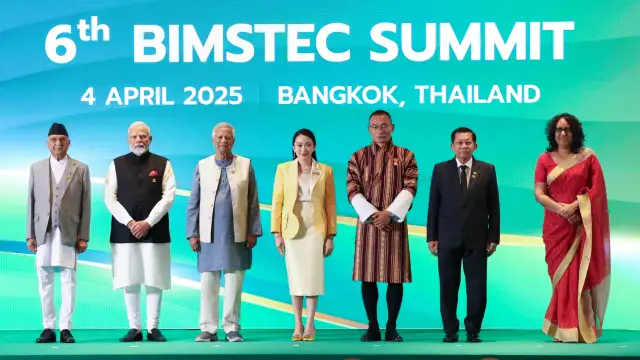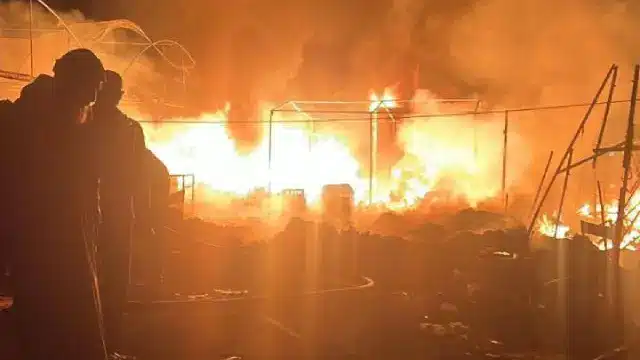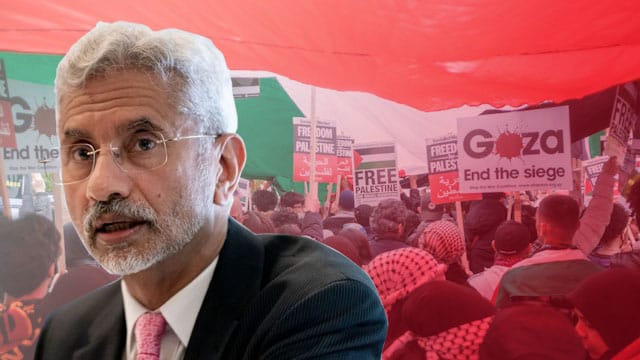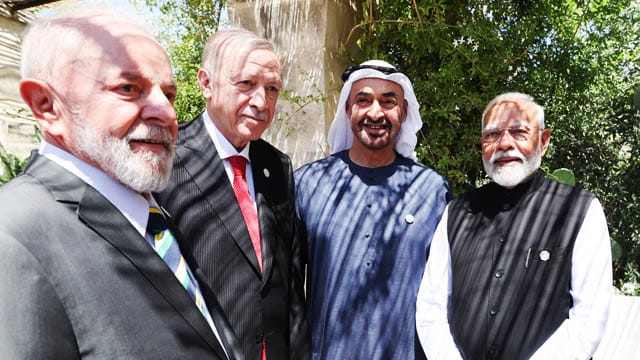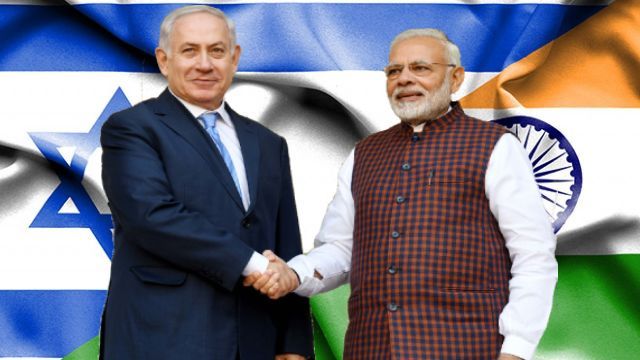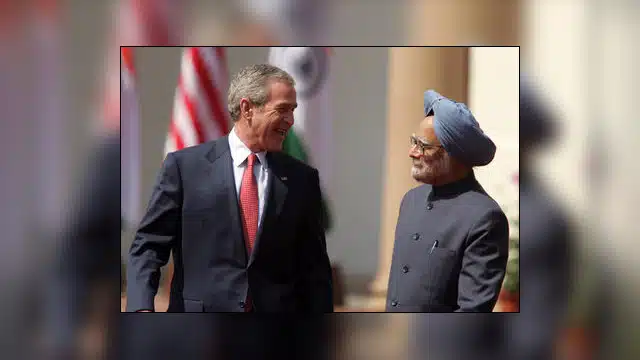Indian Prime Minister Narendra Modi concluded his tour of Thailand on Friday, April 4th, attending the 6th Summit of the Bay of Bengal Initiative for Multi-Sectoral Technical and Economic Cooperation (BIMSTEC) in Bangkok. The Bangkok BIMSTEC summit became the first in-person gathering since 2018, but rather than showcasing India’s regional leadership, the summit highlighted something more troubling: India’s growing isolation in its own backyard despite being the region’s dominant economic and military power.
The carefully choreographed diplomatic niceties at the Bangkok BIMSTEC summit—handshakes, photo opportunities, and boilerplate communiqués—barely concealed the tensions underlying India’s relationships with virtually every one of its neighbours.
After 11 years of Modi’s leadership, the country appears to have squandered its natural advantages and historical ties in pursuit of a Hindu nationalist agenda that has alienated even traditionally friendly governments.
Litany of grand announcements to mask strategic failures
In his address to the Bangkok BIMSTEC summit, Mr Modi announced a flurry of India-led initiatives, seemingly designed to project an image of regional leadership.
These included establishing BIMSTEC Centres of Excellence in India on disaster management, sustainable maritime transport, traditional medicine, and agricultural research. He also unveiled BODHI (BIMSTEC for Organized Development of Human Resource Infrastructure), a new programme for youth training and scholarships.
Not content with these gestures, the prime minister offered a pilot study to assess regional needs in Digital Public Infrastructure, a capacity-building programme for cancer care, a BIMSTEC Chamber of Commerce, annual business summits, an athletics meet, the first BIMSTEC Games in 2027, a traditional music festival, a young leaders’ summit, a hackathon, and a young professional visitors programme.
This barrage of initiatives appeared less about meaningful regional cooperation and more about creating the impression of Indian centrality to BIMSTEC—a narrative increasingly at odds with the diplomatic reality on the ground.
Bangladesh: The revolution next door
Perhaps the most revealing encounter at the Bangkok BIMSTEC summit was Mr Modi’s meeting with Bangladesh’s interim leader Muhammad Yunus—their first since a popular uprising eight months ago ousted longtime Indian ally Sheikh Hasina, ending her Awami League’s 15-year rule.
Chief Adviser Professor Muhammad Yunus and Indian Prime Minister @narendramodi join a bilateral meeting on the sidelines of sixth BIMSTEC Summit in Bangkok, Thailand on Friday. pic.twitter.com/Ig7OPcSYN0
— Chief Adviser of the Government of Bangladesh (@ChiefAdviserGoB) April 4, 2025
The interim government of Bangladesh, which enjoys broad popular support and tactical backing from Western nations and China, has accused India of violating Bangladesh’s sovereignty by using Ms Hasina as a pawn.
Anti-India sentiment has surged in Bangladesh, fuelled by the Islamophobic rhetoric emanating from Mr Modi’s far-right Bharatiya Janata Party (BJP) and its ideological parent, the Rashtriya Swayamsevak Sangh (RSS).
Met Mr. Muhammad Yunus, Chief Adviser of the interim government of Bangladesh. India remains committed to a constructive and people-centric relationship with Bangladesh.
— Narendra Modi (@narendramodi) April 4, 2025
I reiterated India’s support for peace, stability, inclusivity and democracy in Bangladesh. Discussed… pic.twitter.com/4UQgj8aohf
The RSS’s open proclamations about creating an “Akhand Bharat” (undivided India) that would incorporate Bangladesh into a Hindu theocratic state have understandably alarmed Bangladesh’s predominantly Muslim population of 180 million.
Meanwhile, since August 2024, India has been accused of spreading misinformation about Bangladesh, alleging that Islamist forces control the interim government and that attacks on minority Hindus have increased—claims vehemently denied by Dhaka.
Despite Bangladesh’s repeated requests for the extradition of Sheikh Hasina to face trial, India has not only harboured the ousted prime minister but allowed her to deliver provocative speeches to supporters in Bangladesh, potentially stoking violence, including the demolition of the iconic 32 Dhanmondi Road building belonging to Sheikh Mujibur Rahman, the defacto “founder” of the country.
Although the meeting between Mr Yunus and Mr Modi was described as “constructive, productive, and fruitful” by the Bangladeshi leader’s press secretary—with photos showing the two smiling and shaking hands—the underlying tensions were evident.
Mr Modi “reiterated India’s support for a democratic, stable, peaceful, progressive and inclusive Bangladesh” and expressed a desire for “positive and constructive relations” while simultaneously repeating New Delhi’s concerns about alleged “atrocities” against minorities—a matter Bangladesh insists is exaggerated.
For his part, Mr Yunus raised Dhaka’s complaint about Hasina’s incendiary remarks from exile in India, highlighting a significant irritant in bilateral relations.
Nepal: Communists versus the Hindu state
Relations with Nepal are scarcely better. Prime Minister KP Sharma Oli, whose Communist Party of Nepal (Unified Marxist-Leninist) or CPN(UML) leads a coalition government with the Nepalese Congress, has viewed India with suspicion for allegedly stoking and sponsoring a nationwide pro-monarchy movement aimed at reverting the 19-year-old republic to a Hindu theocratic monarchy under deposed king Gyanendra.
Tensions escalated when Mr Modi inaugurated a map of “Akhand Bharat” that incorporated Nepal, prompting Mr Oli’s government to claim territories in India as belonging to Nepal.
Though Mr Oli was briefly out of power—allegedly due to Indian machinations—he returned with the support of the Nepalese Congress, which despite its monarchist past now opposes a return to royal rule.
Had a productive meeting with Prime Minister KP Sharma Oli in Bangkok. India attaches immense priority to relations with Nepal. We discussed different aspects of India-Nepal friendship, especially in sectors like energy, connectivity, culture and digital technology. We also… pic.twitter.com/Ygrj30VyfH
— Narendra Modi (@narendramodi) April 4, 2025
India’s mainstream media, controlled by Mr Modi’s close oligarchs, have reported that New Delhi’s external intelligence agency, the Research and Analysis Wing (R&AW), has claimed that communists are helping change the demography of Nepal by increasingly helping the Muslim population to rise.
Using such narratives, by claiming Nepal is experiencing a rise in its Muslim population—a transparent attempt to stoke Islamophobia and blame communists that has backfired spectacularly—India’s Hindutva-aligned mainstream propaganda outlets have further soured relations between the two countries.
Nepalese communists, including the CPN(UML), have threatened former king Gyanendra with “dire consequences” if he doesn’t back away from restoration efforts.
Ironically, according to a former R&AW spy, it was India’s intelligence agency that played a pivotal role in transitioning Nepal from an absolute monarchy to a constitutional republic.
Suspicions of Indian involvement in Nepal’s royalist movement intensified after a poster of Yogi Adityanath, the Hindutva hardliner and chief minister of India’s Uttar Pradesh state, appeared prominently at a pro-monarchy rally.
Adityanath, whose religious institution has long-standing ties to Nepal’s royal family, has openly advocated for a Hindu state in Nepal and once described the day Nepal was declared secular as a “black day.”
Despite these tensions, the official readout of Mr Modi’s meeting with Mr Oli at the sidelines of the Bangkok BIMSTEC summit blandly noted that the two “reviewed the unique and close relationship between India and Nepal” and “expressed satisfaction at the progress in enhancing physical and digital connectivity, people-to-people linkages, and in the domain of energy”—diplomatic boilerplate that barely conceals the strained reality.
Sri Lanka: The communist government that said “no”
India’s southern neighbour, Sri Lanka, presents another diplomatic challenge. Since coming to power, the communist-led government under President Anura Kumara Dissanayake has rejected a wind energy project by Gautam Adani—one of Mr Modi’s closest oligarch allies—and begun reviewing a port deal previously awarded to Adani’s conglomerate.
Landed in Colombo. Grateful to the ministers and dignitaries who welcomed me at the airport. Looking forward to the programmes in Sri Lanka. pic.twitter.com/RYm5q1VhZk
— Narendra Modi (@narendramodi) April 4, 2025
Mr Modi’s visit to Sri Lanka following the BIMSTEC summit appears primarily aimed at securing Adani’s business interests rather than addressing broader bilateral concerns.
The BJP government has long accused Sri Lanka’s communists of being pro-China, despite Mr Dissanayake’s assurances that his foreign policy will be “pragmatic and against nobody”—a stance that frustrates India’s desire to outmanoeuvre Beijing in the island nation.
China-shaped hole in India’s regional strategy
The backdrop to these diplomatic tensions is China’s increasing influence in South Asia—a development that directly challenges India’s historical position as the region’s pre-eminent power.
Through pragmatic policies and strategic investment, Beijing has made significant inroads with Bangladesh, which feels betrayed by the United States following the Trump administration’s shift away from globalist, neo-liberal approaches.
Dhaka is now strengthening ties with China to counterbalance its relationships with other powers.
Sri Lanka, under Mr Dissanayake, has increased its friendly exchanges with China, ignoring India’s disgruntlement.
Similarly, Nepal is deepening its engagement with China, though it remains dependent on Indian ports for trade.
Rather than adopting a non-interventionist approach that might normalise relations and protect long-term interests, India continues to exert pressure on its neighbours, adhering to a Hindutva doctrine of regional dominance that is yielding diminishing returns.
The bay of unfulfilled potential
As the Bangkok BIMSTEC summit concluded with the usual diplomatic platitudes and promises of regional cooperation, the fundamental question remains: will Mr Modi recognise that his Hindutva approach to foreign policy is undermining India’s strategic interests in its immediate neighbourhood?
The evidence from the Bangkok BIMSTEC summit suggests not.
Instead of addressing the legitimate concerns of neighbouring states or adopting a more conciliatory stance, the Indian prime minister appears content to double down on grandiose announcements and symbolic gestures while ignoring the substantive issues that have eroded India’s regional standing.
For a country with aspirations of global leadership and a permanent seat on the UN Security Council, India’s inability to maintain cordial relations with the nations in its immediate vicinity represents a profound strategic failure.
The Bangkok BIMSTEC summit, rather than showcasing India’s regional leadership, merely highlighted how Mr Modi’s foreign policy has left the country increasingly isolated in its own backyard.
As India continues to prioritise Hindu nationalist ideology over pragmatic diplomacy, its neighbours are looking elsewhere for partnerships—most notably to China.
In the battle for South Asian influence, Mr Modi’s isolation at the Bangkok BIMSTEC summit suggests that India’s regional strategy is failing precisely when the country can least afford it to.

